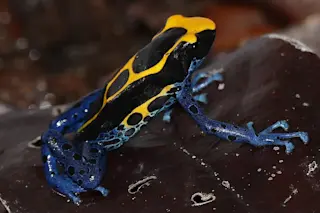A dyeing poison frog showing off its bright colors. Photo by Bernard DUPONT The conspicuous colors of poison frogs are presumed to be a warning. Indeed, vibrant patterns so often signal toxicity that biologists even have a special term for them: aposematic coloration. But, weird as it might sound, new research suggests that radiant skin patterns might help these frogs stay hidden, too. Poison frogs are armed with some of the planet's most potent toxins. The most deadly is the golden poison frog (Phyllobates terribilis)—one frog's worth of toxin is roughly enough to kill 10,000 mice or about 10 people, though estimates vary. It makes sense for it and other frogs to let potential predators know that eating them is a bad idea, and most do seem to advertise their toxic nature through bright, colorful patterns. The dyeing poison frog (Dendrobates tinctorius) is no exception: its legs are a brilliant ...
This Poisonous Frogs' Bright Colors Weirdly Help Camouflage It
Discover how the dyeing poison frog uses vibrant patterns for both warning and camouflage in research highlighting distance-dependent coloration.
More on Discover
Stay Curious
SubscribeTo The Magazine
Save up to 40% off the cover price when you subscribe to Discover magazine.
Subscribe













